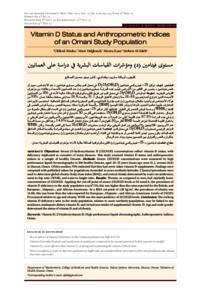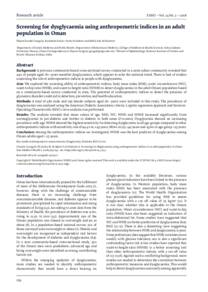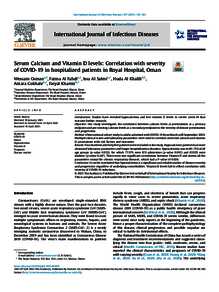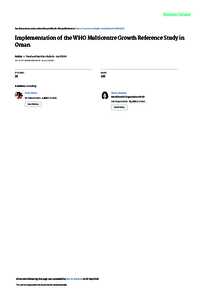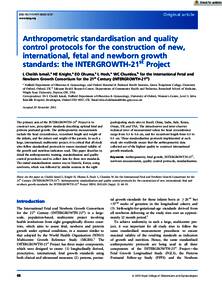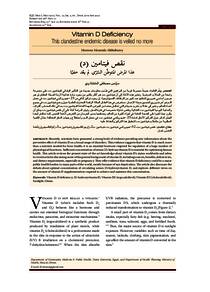وثيقة
Vitamin D status and anthropometric indices of an Omani study population.
المساهمون
عناوين أخرى
مستوى فيتامين (د) ومؤشرات القياسات البشرية في دراسة على العمانيين
الناشر
College of Medicine, Sultan Qaboos University.
ميلادي
2013-05
اللغة
الأنجليزية
الملخص الإنجليزي
Objectives: Serum 25-hydroxyvitamin D [25(OH)D] concentrations reflect vitamin D status, with
deficiency implicated as causative of many diseases. This study assessed vitamin D status and anthropometric
indices in a sample of healthy Omanis. Methods: Serum 25(OH)D concentrations were measured by high
performance liquid chromatography in 206 healthy Omanis, aged 18–55 years (mean age: men 31.1, women 26.8)
in Muscat, Oman. Of this number, 95% indicated that they had never taken vitamin D supplements. Findings were
compared with published values for populations domiciled in more northerly latitudes. Classical procedures were
used to determine global obesity (body mass index [BMI]), and central obesity determined by waist circumference,
waist-to-hip ratio (WHR), and waist-to-height ratio. Results: Women, as compared to men, had markedly lower
concentrations of 25(OH)D. Applying the cut-off point of serum 25(OH)D levels at 50 nmol/L, the prevalence of
vitamin D deficiency in the study population was 87.5%; this was higher than the rates reported for the British, and
European-, Hispanic-, and African-Americans. At a BMI cut-point of ≥30 kg/m2, the prevalence of obesity was
14.6%; this was lower than the rates reported for European-, Hispanic-, and African-Americans. Levels of 25(OH)
D increased relative to age and obesity. WHR was the main predictor of 25(OH)D levels. Conclusion: The striking
vitamin D deficiency seen in the study population, relative to more northerly populations, may be linked to sun
avoidance, inadequate dietary vitamin D, and virtual non-intake of supplemental vitamin D. Age and male-gender
determined the status of vitamin D and of obesity.
برعاية
Sultan Qaboos University
المجموعة
URL المصدر
zcustom_txt_2
Abiaka, Clifford, Delghandi, Marit, Kaur, Meenu, &Al-Saleh, Mohsin (2013). Vitamin D status and anthropometric indices of an Omani study population. Sultan Qaboos University Medical Journal, 13 (2), 224.
الملخص العربي
قيمت هذه الدراسة مستوى فيتامين د عند العمانيين الأصحاء وعلاقته مع مؤشرات القياس البشرية، وقد خلصت الدراسة إلى أن نقص فيتامين د الشديد لدى مجتمع الدراسة بالنسبة لسكان المنطقة الشمالية قد يكون بسبب تجنب أشعة الشمس أو عدم كفايته في الغذاء، أو لعدم تناول مكملات فيتامين د، وأن مستوى فيتامين د والسمنة يتأثران بالعمر والفوارق بين الجنسين بحيث يزداد عند الرجال.
قالب العنصر
مقالات الدوريات

